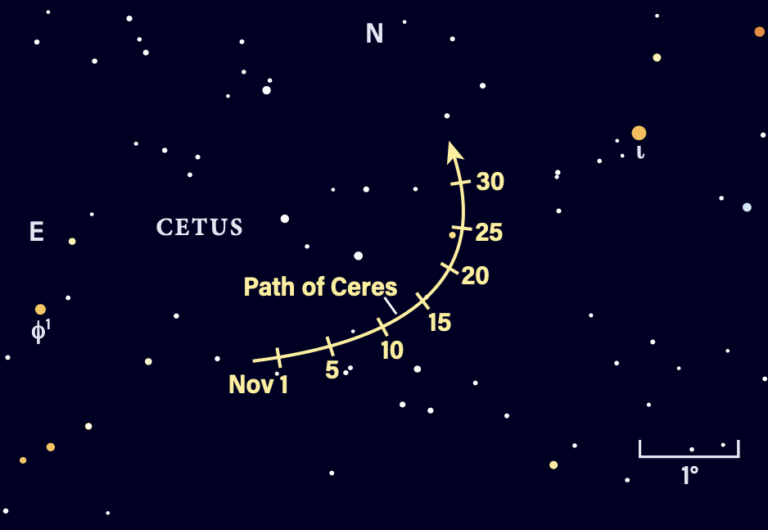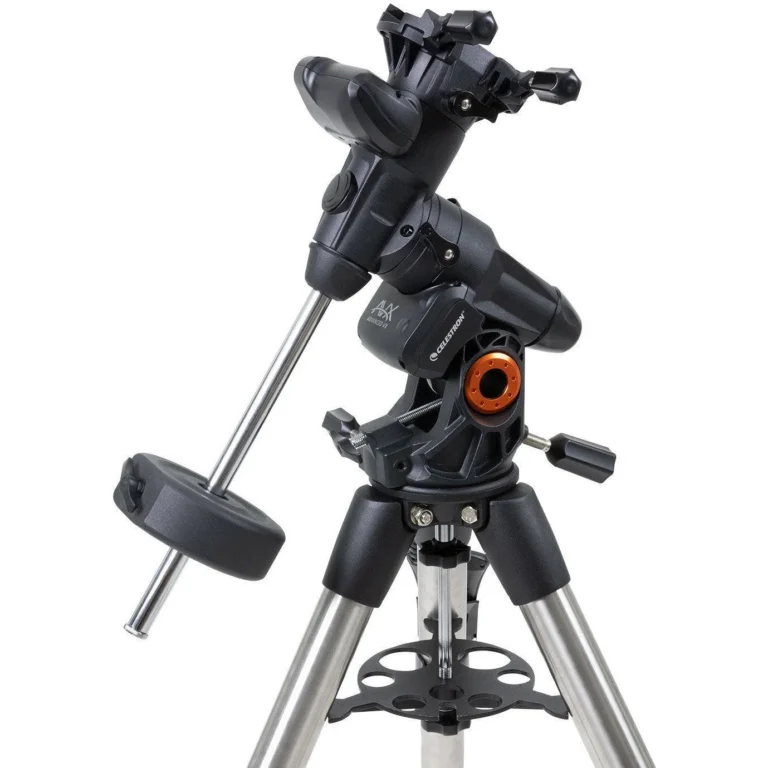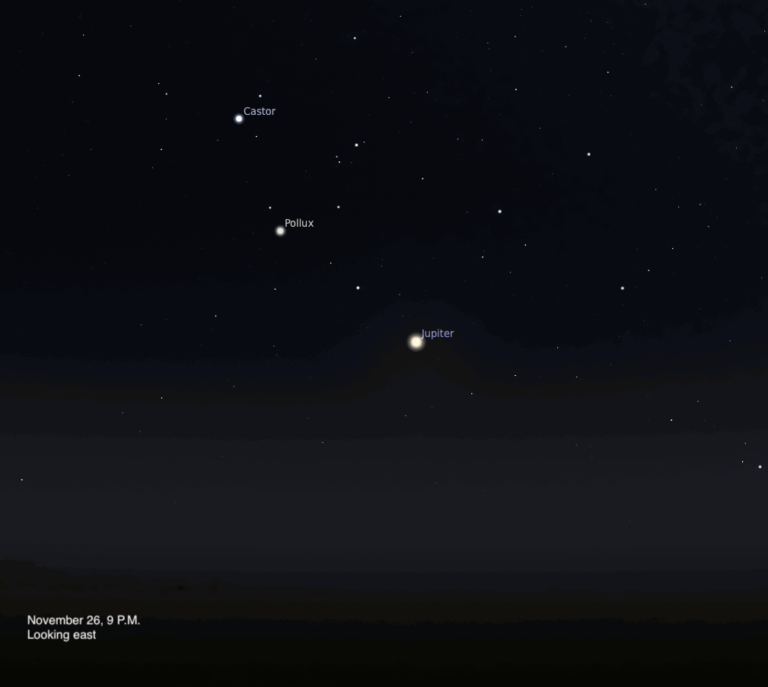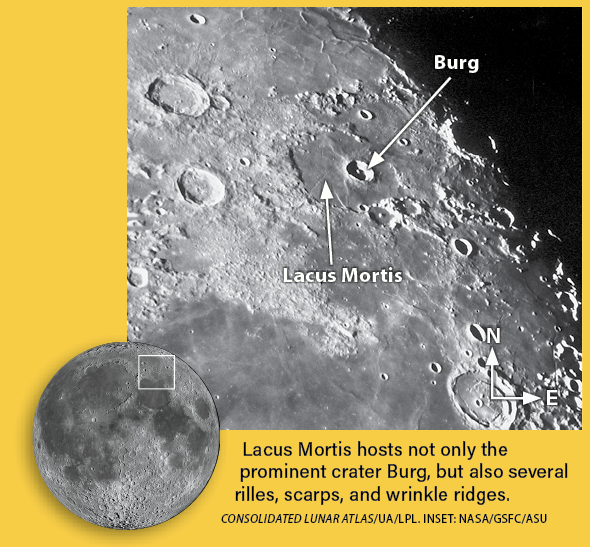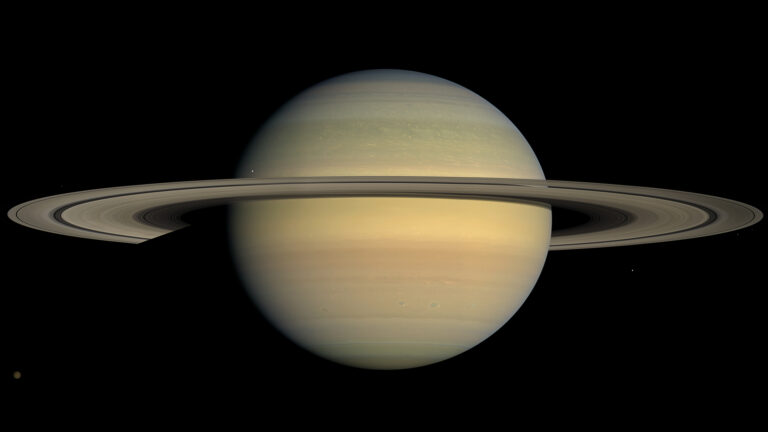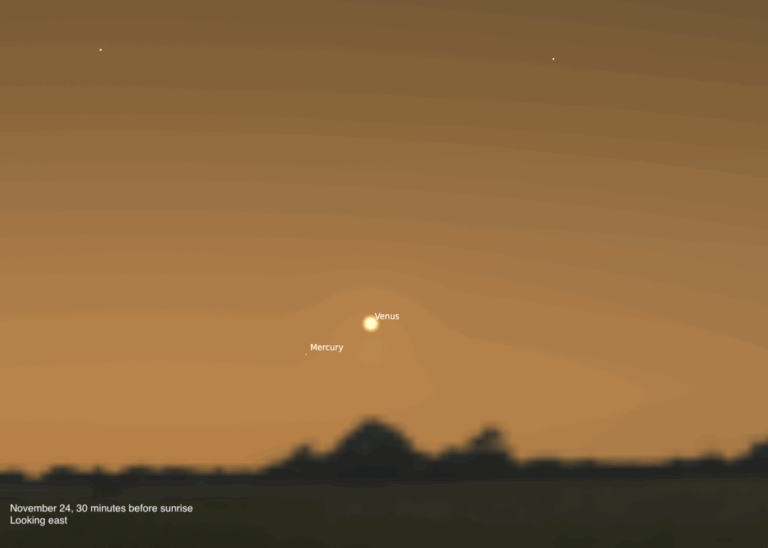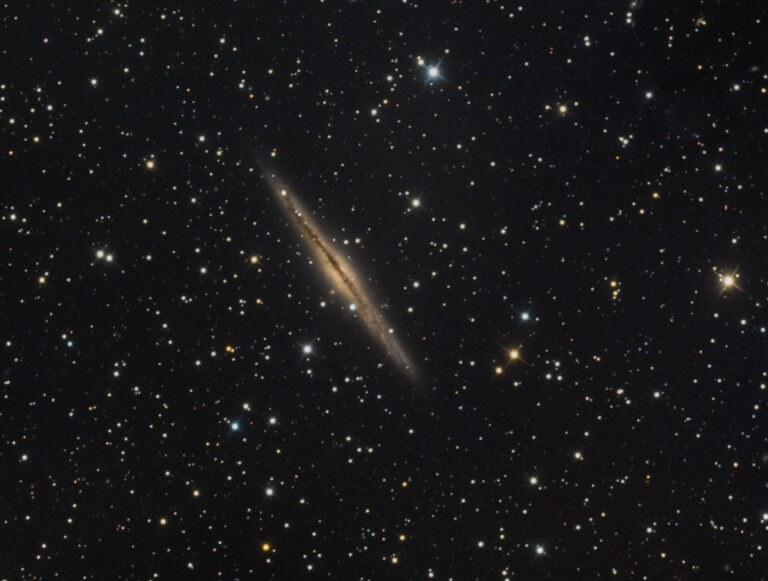
Key Takeaways:
Friday, May 12
Last Quarter Moon occurs at this morning 10:28 A.M. EDT. Because the Moon rises early and sets in the afternoon during this phase, the evening sky is clear of moonlight for easier deep-sky viewing after dark.
The large constellation Ophiuchus is climbing above the eastern horizon a few hours after sunset. This circular star pattern contains a plethora of deep-sky objects, including numerous globular clusters. Two of these are M12 and M10, which lie close to each other near magnitude 2.7 Delta (δ) Ophiuchi.
Let’s start at M12, which glows at magnitude 6.7 and spans roughly 16′. It is a loosely concentrated cluster located just over 8° east of Delta. Its neighbor, M10, lies 3° southeast of M12, meaning you can catch both in the same binocular field of view. M10 is slightly brighter (magnitude 6.6) and a tad larger (20′ across), but its stars are much more concentrated so it may pop out against the background more readily than M12.
If you’re able to zoom in on each with a telescope, compare and contrast their appearance. Although many globulars look similar at first glance, careful study will reveal subtle differences between them.
Sunrise: 5:48 A.M.
Sunset: 8:05 P.M.
Moonrise: 2:20 A.M.
Moonset: 12:22 P.M.
Moon Phase: Waning crescent (49%)
*Times for sunrise, sunset, moonrise, and moonset are given in local time from 40° N 90° W. The Moon’s illumination is given at 12 P.M. local time from the same location.

Saturday, May 13
Dwarf planet 1 Ceres stands stationary against the stars of Leo at 7 A.M. EDT. This constellation is high in the southwest two hours after sunset — look for the backwards question mark formed by six of Leo’s stars, starting with his brightest star, Regulus, to find the Lion’s position on the sky. About 24° east of this so-called Sickle asterism is Leo’s tail, marked by 2nd-magnitude Denebola. This is our jumping-off point to find 8th-magnitude Ceres this evening.
From Denebola, simply scan 2° east to find the main-belt world. Ceres is the largest object in the main belt and, when Pluto was “demoted” to the category of dwarf planet by the International Astronomical Union, Ceres was promoted from asteroid to this new position. There are few background stars to confuse with Ceres here, though note the dwarf planet is moving slowly. You won’t notice any motion overnight, particularly tonight when it is stationary. Instead, take a photo or plot the points of light you see in a logbook and come back in a few nights to see which has moved. That’s Ceres.
As a bonus, spiral galaxy M99 lies nearby, just 5° to Ceres’ east in Coma Berenices. This 10th-magnitude face-on galaxy will require a relatively large aperture to discern detail, as it’s one of the fainter objects in Messier’s catalog.
The Moon passes 3° south of Saturn at 9 A.M. EDT. Early risers can catch the pair hanging in the southeast before sunrise. They are slightly farther apart (5°) at that time, with magnitude 0.8 Saturn sitting to the Moon’s upper left. The ringed planet is just 0.5° east of the 5th-magnitude star Sigma (σ) Aquarii. If you zoom in on the gas giant with a telescope, you might see its brightest moon, Titan, about 1′ to the planet’s west.
Sunrise: 5:47 A.M.
Sunset: 8:06 P.M.
Moonrise: 2:52 A.M.
Moonset: 1:37 P.M.
Moon Phase: Waning crescent (38%)
Sunday, May 14
Mercury is stationary at 3 A.M. EDT. The solar system’s innermost planet is still hard to spot — 30 minutes before sunrise, it is a mere 1° high in the east and a dim magnitude 2.2. Somewhat easier to locate is magnitude –2.1 Jupiter, which is much brighter but just 5° high in the east at the same time. That’s still pretty low, so observers with trees or buildings to the east may not have much luck. If you do try to observe the gas giant with binoculars or a telescope, make sure to put them away several minutes before the Sun rises from your location, which may differ from the time given below.
If you’re up earlier — say, an hour and a half to an hour before sunrise, you can try to net a view of the solar system’s most distant planet. Neptune now lies 10° east-northeast of the Moon, or about two binocular fields over from our satellite as it hangs in the morning sky. At magnitude 7.8, you’ll definitely need binoculars or a telescope to find Neptune sitting some 40′ east of 5th-magnitude 20 Piscium. The ice giant will appear as a faint, “flat” star in your optics, perhaps with a slight blue cast. The Moon will pass 2° south of Neptune at 9 P.M. EDT tonight, when both are below the horizon.Sunrise: 5:46 A.M.
Sunset: 8:07 P.M.
Moonrise: 3:20 A.M.
Moonset: 2:49 P.M.
Moon Phase: Waning crescent (27%)

Monday, May 15
Venus and Mars continue to rule the sky long after sunset. From extreme northern locations (i.e., Alaska), they don’t set at all, hanging around until the sky grows light again before sunrise!
Both are in Gemini tonight, one at either end of the constellation. They appear to hang directly above the last vestiges of Orion as the Hunter sets in the west. An hour after sunset in the Midwest, Venus is still nearly 30° high, sitting directly next to 3rd-magnitude Mebsuta. At magnitude –4.2, however, the planet vastly outshines the star. Though a telescope, Venus appears 19″ across and shows off its 60-percent-lit gibbous face. To Venus’ far left is Procyon, the bright star in Canis Minor, while to its right is Capella, Auriga’s luminary. The three form a long, horizontal line on the sky with Venus in the middle.
To Venus’ upper left, located in a line of its own, is Mars. The Red Planet forms the leftmost (southeasternmost) point on a line with the stars Castor and Pollux. It is magnitude 1.5, readily visible once darkness begins to fall. It’s also roughly the same magnitude as the Twins’ heads, so look for a short horizontal line of three points of light all about the same brightness above Venus. Mars should appear reddish even to the naked eye; in a telescope, its orangey-red surface will be more apparent, though its 5″-wide face means details in the landscape will be essentially impossible to discern by eye.
Sunrise: 5:45 A.M.
Sunset: 8:08 P.M.
Moonrise: 3:44 A.M.
Moonset: 4:00 P.M.
Moon Phase: Waning crescent (18%)
Tuesday, May 16
With no evening Moon tonight, try leveraging the dark sky to spot the soft glow of the zodiacal light after sunset. Sometimes called false dusk at this time of year, this is a cone-shaped pillar of light that appears along the ecliptic — the plane of the solar system — above the western horizon once the Sun has set. Mars and Venus, which both sit on the ecliptic, can help guide your eye.
Your best chance of spotting the zodiacal light is from a dark location with no ground lighting and a clear western horizon. If you can get to a higher altitude than your surroundings, that will help as well. Long-exposure photographs may capture it better than your naked eye, so consider trying your hand at nightscape photography — especially if you’ve got a good landscape as a foreground.
The zodiacal light is caused by sunlight reflecting off dust in the inner solar system, left there by past comets circling close to the Sun. As these icy dirtballs near our star, they heat up and ices on their surface turn to gas, often liberating copious amounts of dust in the process.
Sunrise: 5:44 A.M.
Sunset: 8:09 P.M.
Moonrise: 4:07 A.M.
Moonset: 5:10 P.M.
Moon Phase: Waning crescent (10%)
Wednesday, May 17
The Moon is making its way across the sky at a good clip. Our satellite passes 0.8° north of Jupiter at 9 A.M. EDT — but before that, it occults (or passes in front of) the gas giant in an event visible from much of North America, Canada, and Greenland.
Jupiter and the Moon rise together this morning around 4:30 A.M. local time, even as the sky is growing brighter with the impending sunrise. The occultation itself takes place in daylight, with the lunar limb beginning to cover the gas giant around 7:11 A.M. EDT in Miami, 7:21 A.M. EDT in Atlanta, 6:36 A.M. CDT in Chicago, and 6:32 A.M. CDT in Denver. The timing is heavily location dependent, as with all such events, so check out the International Occultation Timing Association’s page on the occultation for more details about its visibility and timing from your location.
Because the occultation occurs in daylight, extra care must be taken if you want to watch it with binoculars or a telescope. Focus only on the area of sky where the Moon and Jupiter lie; if possible, set up your tracking scope before sunrise to avoid accidentally swinging it near the Sun while trying to locate them in the daytime sky. Fortunately, the Moon is easy to find and should keep your gaze far from the Sun. Remember to never point binoculars or a telescope anywhere near the Sun during the day unless you are using a safe solar filter.
Continuing on its journey, the Moon passes 4° north of Mercury at 10 P.M. EDT, though neither is visible at that time.
Sunrise: 5:43 A.M.
Sunset: 8:10 P.M.
Moonrise: 4:32 A.M.
Moonset: 6:20 P.M.
Moon Phase: Waning crescent (4%)
Thursday, May 18
Mars has now moved into Cancer, getting ready for a meetup with the Beehive Cluster (M44) later this month. You can preview the event by looking about 8.5° east of the Red Planet after sunset. Once the stars begin to pop out against the background sky, the glittering Beehive will start to appear. This 4th-magnitude open cluster will be visible to the naked eye once darkness fully falls; its stars spread over an area nearly 100′ wide, or three times the width of the Full Moon.
If you want to look at the Beehive with a bit of magnification, that’s fine — but opt for low magnification to avoid losing too many of its scattered stars from your smaller field of view. Known since prehistoric times, the Beehive is roughly 730 million years old and sits between 500 and 600 light-years from Earth.
M44 isn’t the only Messier object in Cancer — M67, a 6th-magnitude open cluster, also lies within the Crab. To find it, scan about 8° south-southeast of M44. This grouping spans about the size of one Full Moon (30′) and is a much older cluster, estimated around 3 billion to 4 billion years of age.
Sunrise: 5:43 A.M.
Sunset: 8:11 P.M.
Moonrise: 4:59 A.M.
Moonset: 7:30 P.M.
Moon Phase: Waning crescent (1%)
Friday, May 19
New Moon occurs at 11:53 A.M. EDT, leaving a perfectly dark sky overhead. Let’s take advantage and try something a little more challenging: the Blinking Planetary Nebula in Cygnus. This fascinating object is formed from the shell of gas cast off by a dying star. You’ll find it about 1.5° northeast of magnitude 4.5 Theta (θ) Cygni. Opt for a 6-inch scope or larger and wait until after full dark for the best view.
The Blinking Planetary, also cataloged as NGC 6826, is famous for doing exactly what its name implies: It appears to “blink” in and out of existence when observers switch between looking at it directly or out of the corner of their eye (i.e., using averted vision). Why is this? It’s because of the way the human eye is structured, with cells requiring more light to activate toward the center of your vision and those needing less light at the edges. So, when you look directly at NGC 6826, you see only the brighter central star, but not the faint nebular surrounding it. Switch to averted vision, though, and glance toward the edge of your eyepiece’s field of view, and the faint nebular will blink into existence as those cells pick up its dimmer glow!
Sunrise: 5:42 A.M.
Sunset: 8:12 P.M.
Moonrise: 5:29 A.M.
Moonset: 8:39 P.M.
Moon Phase: New


